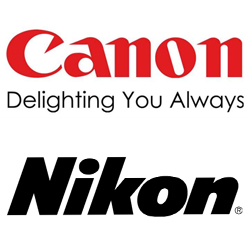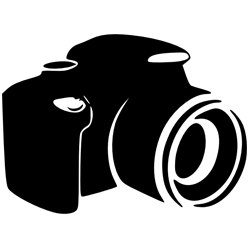The Unending Battle Between Canon And Nikon
Canon and Nikon are the two names that reverberate among professional and amateur photographers. The varieties presented by the two companies make the process of decision-making overwhelming. It is not a surprise that inquiries into which of them is a better option is growing in photography forums – and has attracted the opinion of young and professional photographers.
Notwithstanding that there are lots of camera brands out there, it may surprise just anyone that Nikon and Canon are the two companies getting the buzz.
Besides being the foremost manufacturers of multipurpose cameras, these two companies have a variety that fits almost everyone in the photography world – and I think this is the major reason why it is hard not to mention them.

“Canon and Nikon are the two names that reverberate among professional and amateur photographers.”
Pitching Nikon and Canon, it is almost as if a product by one is quickly countered by the other with nearly the same – or more – features as the model released by the other. For example, Nikon has the D4s range of cameras while Canon has the 1D X (the first model in the series). Both are great cameras. The difference lies in the body design and the speed. You can get great results with any of them. However, you must note that the result depends on the type of lens you put in front of the body. If you pile up crap in front of your camera, you will definitely end up with a result that is just as crappy.
If you are wondering which of them to go for, my honest answer would be any of them. They are both pretty expensive DSLRs and for a beginner, they should not be your first camera. One remarkable change Canon brought to their cameras is that they abandoned the old mount in the later part of the 80s through to the early 90s. What this means is that if you have the older lens, you can slot it into any of Canon’s newer cameras. The restriction pissed off photographers in the past – and the transformation was a smart move by Canon.

“If you are wondering which of them to go for, my honest answer would be any of them.”
Again, there is the Nikon D810 camera and subsequent upgrades which are closely rivaled by the Canon 5D Mark III and its upgrades. The latter is one of the best-rounded cameras to ever hit the market. It is suitable for myriad types of photography; from portraits to weddings to sports and more. It also produces a great video.
Make no mistake; the D810 is also a monster offering 36 megapixels. It is not as versatile as the 5D Mark III because it is best suitable for certain situations. One thing both companies are good at is packing up the megapixels and improving on the sensors. Newer camera manufacturers often make the mistake of thinking that megapixels are all that matters without trying to improve on other parts of the camera – which is their most obvious flaws.
Talking about sensors, both Canon and Nikon cameras are powered by sensors that are similar in size. The majority of Nikon’s newer model DSLRs use the latest sensor design that eliminates optical low-pass filter without much distortion in patterns and fine lines. Light has to pass through the filter before hitting the sensor. Hence, eliminating the filter allows the camera to grab more details and perform better in an environment with low light. Canon DSLRs still make use of optical low-pass filters while putting more effort on increasing the megapixels – although there are camera ranges like the Canon EOS 5DS R that don’t make use of the optical low-pass filter.
When it comes to operation, the two brands have similar performance – not without noticeable differences though. The two brands use different terminologies that mean the same thing. For example, the Nikon uses “S” while Canon uses “Tv” to indicate shutter priority mode. The terminologies used by Nikon are far simpler than those used by Canon. When you want to switch from one brand to another, you surely will need to do a lot of unlearning and relearning.


